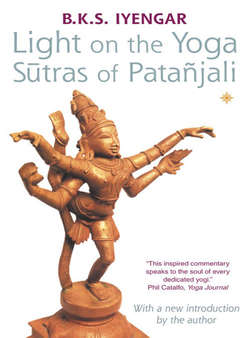Читать книгу Light on the Yoga Sutras of Patanjali - Литагент HarperCollins USD - Страница 24
II: Sadhana Pada
ОглавлениеWhy did Patañjali begin the Yoga Sutras with a discussion of so advanced a subject as the subtle aspect of consciousness? We may surmise that intellectual standards and spiritual knowledge were then of a higher and more refined level than they are now, and that the inner quest was more accessible to his contemporaries than it is to us.
Today, the inner quest and the spiritual heights are difficult to attain through following Patañjali’s earlier expositions. We turn, therefore, to this chapter, in which he introduces kriyayoga, the yoga of action. Kriyayoga gives us the practical disciplines needed to scale the spiritual heights.
My own feeling is that the four padas of the Yoga Sutras describe different disciplines of practice, the qualities or aspects of which vary according to the development of intelligence and refinement of consciousness of each Sadhaka.
Sadhana is a discipline undertaken in the pursuit of a goal. Abhyasa is repeated practice performed with observation and reflection. Kriya, or action, also implies perfect execution with study and investigation. Therefore, sadhana, abhyasa, and kriya all mean one and the same thing. A sadhaka, or practitioner, is one who skilfully applies his mind and intelligence in practice towards a spiritual goal.
Whether out of compassion for the more intellectually backward people of his time, or else foreseeing the spiritual limitations of our time, Patañjali offers in this chapter a method of practice which begins with the organs of action and the senses of perception. Here, he gives those of average intellect the practical means to strive for knowledge, and to gather hope and confidence to begin yoga: the quest for Self-Realization. This chapter involves the sadhaka in the art of refining the body and senses, the visible layers of the soul, working inwards from the gross towards the subtle level.
Although Patañjali is held to have been a self-incarnated, immortal being, he must have voluntarily descended to the human level, submitted himself to the joys and sufferings, attachments and aversions, emotional imbalances and intellectual weaknesses of average individuals, and studied human nature from its nadir to its zenith. He guides us from our shortcomings towards emancipation through the devoted practice of yoga. This chapter, which may be happily followed for spiritual benefit by anyone, is his gift to humanity.
Kriyayoga, the yoga of action, has three tiers: tapas, svadhyaya and Isvara pranidhana. Tapas means burning desire to practise yoga and intense effort applied to practice. Svadhyaya has two aspects: the study of scriptures to gain sacred wisdom and knowledge of moral and spiritual values; and the study of one’s own self, from the body to the inner self. Isvara pranidhana is faith in God and surrender to God. This act of surrender teaches humility. When these three aspects of kriyayoga are followed with zeal and earnestness, life’s sufferings are overcome, and samadhi is experienced.
